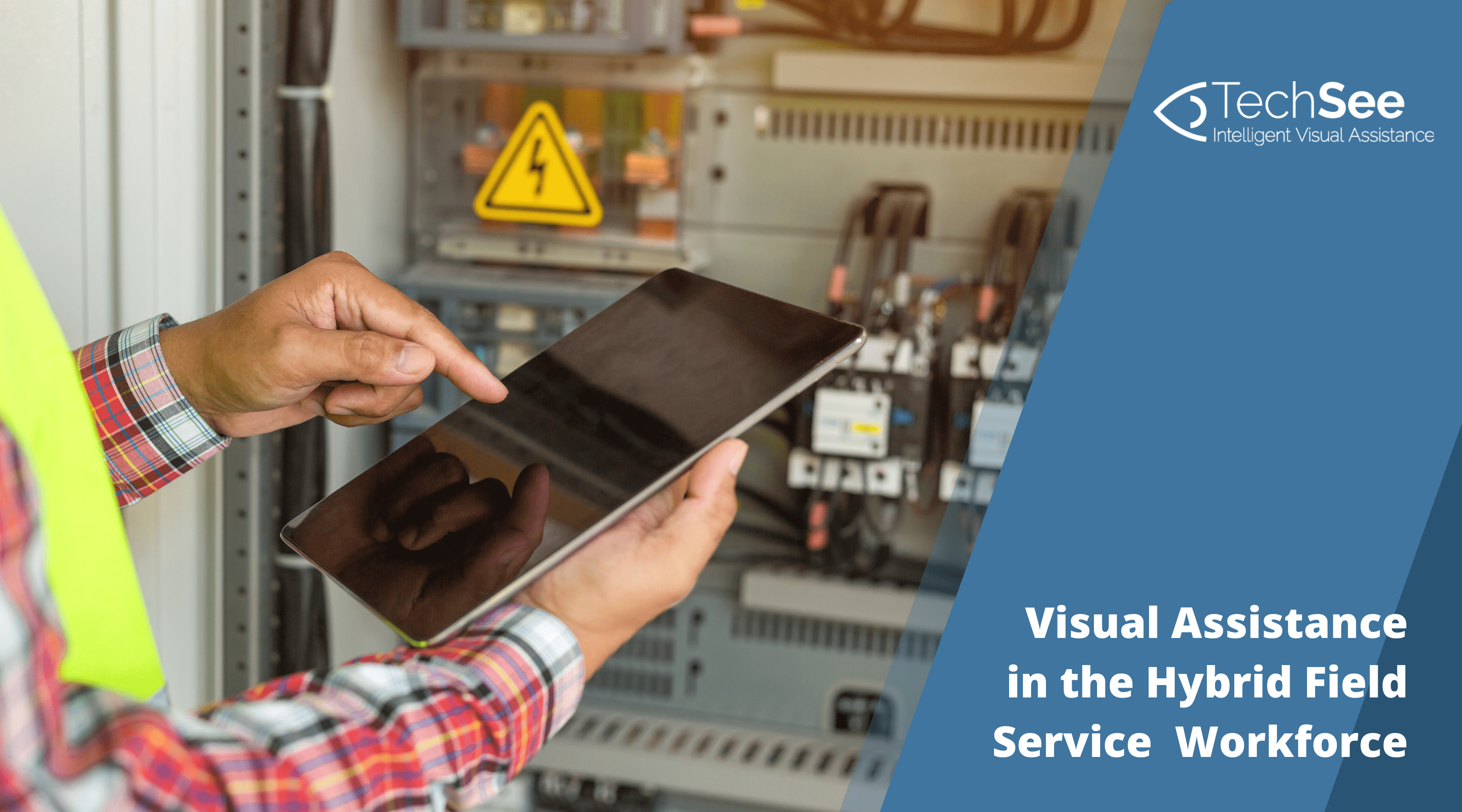
The pandemic has transformed how field service is delivered, with the industry focused on servicing customers in the most efficient way possible. On the one hand, 65% of customers report that they would avoid technician visits unless strictly necessary, a sentiment that has resulted in the explosion of remote service delivery. On the other hand, 62% of customers still expect their issues to be repaired as quickly as ever. The result is a new hybrid field service approach, one that even incorporates self-service, and visual assistance will play a central role in this model.
How Visual Assistance is Utilized in a Hybrid Field Service Workforce
Visual assistance allows users to instantly stream their mobile device camera or screen for real-time, interactive visual engagement. The technology enables technicians to guide their customers using a live video stream overlaid with Augmented Reality (AR), eliminating the need for onsite visits. When a customer needs assistance, a technician can instruct the customer from a remote location, using AR to visually guide the customer to self-resolve the issue. Instead of explaining with words how to configure a smart TV or troubleshoot an Internet issue, the technician can efficiently show the customer what to do. For example, Verizon instituted Fios in a Box to help their subscribers self-install triple-play services while keeping their technicians out of people’s homes.
The simpler the technology is to use, the wider its adoption will be. Ideally, the technology should not require a specific app to be downloaded or installed, should be fully integrated with the organization’s CRM / FSM, and be intuitive to use.
Using Visual Assistance to Improve KPIs in a Hybrid Delivery Model
With its ability to guide customers without requiring an onsite presence, visual assistance has taken a central role in enabling a new hybrid delivery model, improving first-time fix (FTF) rates, and ensuring a positive customer experience.
Here are a number of benefits of incorporating visual assistance technology in a hybrid field technician workforce.
Pre-dispatch inspection
Sometimes it is impossible to avoid an onsite repair. However, technicians should come prepared with the right knowledge, equipment, and spare parts to minimize time spent on site. Using visual assistance, a field services representative can do a pre-dispatch visual walkthrough to clarify the issue and prepare accordingly. Utilizing visual assistance as part of the hybrid technician workforce improves the FTF rates.
Remote expert working with a technician onsite
A field service technician is dispatched to a customer’s location but is having trouble resolving the problem. Instead of scheduling a follow-up visit with a more skilled technician – a practice that is both costly and leads to customer frustration – the field rep can initiate a visual assistance session with a remote expert. The remote expert can see what the technician sees and help repair the problem, either verbally or using AR guidance when necessary.
Autonomous assistance for onsite tech
An alternate approach to dealing with a remote expert is to provide the hybrid field technician workforce with autonomous assistance. With AI-driven visual assistance, technicians point their phones at the equipment being serviced – appliance, control panel, etc. – and a virtual visual assistant uses Computer Vision to identify the equipment and detect the issue, such as:
- error messages
- cabling errors
- installation problems.
The technician is then visually guided to resolution with step-by-step instructions in the form of interactive, annotated images. The AI Assistant can then verify that the technician has successfully resolved the issue.
Remote service delivery for customers
When a customer needs help, visual assistance can ensure service is delivered promptly without requiring a technician dispatch. Via a visual assistance session, the customer can show the field service rep the issue and they can resolve the issue together. This hybrid field service approach enables an organization to utilize the knowledge of older workers who may have otherwise retired in addition to:
- increasing FTF
- eliminating the need for a truck roll
- improving CX.
Self-service
A self-service option that utilizes visual assistance and AR can enable even the least tech-savvy customer to complete a basic installation, troubleshoot an issue, or upgrade equipment on their own without an agent or technician’s help. With a hybrid field service model, visual virtual assistants can use AR technology to identify the equipment, detect the issue, and provide on-screen annotations to help guide the customer through the resolution process.
It’s all in the mix: visual assistance key in the new hybrid field service approach
As the economy opens up, field service organizations are optimistic about industry growth. According to Field Service News 76% of field service companies are focusing on growth rather than survival and are investing in digitization to deliver best-in-class services. Visual assistance is a key technology to help them take a hybrid delivery model approach, a practice that is so critical in today’s new operating environment. This is because the hybrid support model enables onsite technicians and customers to benefit from remote help in both assisted and self-service modes.
Learn more about TechSee’s Hybrid Field Service offerings here.
This article was first published on the TechSee blog.



